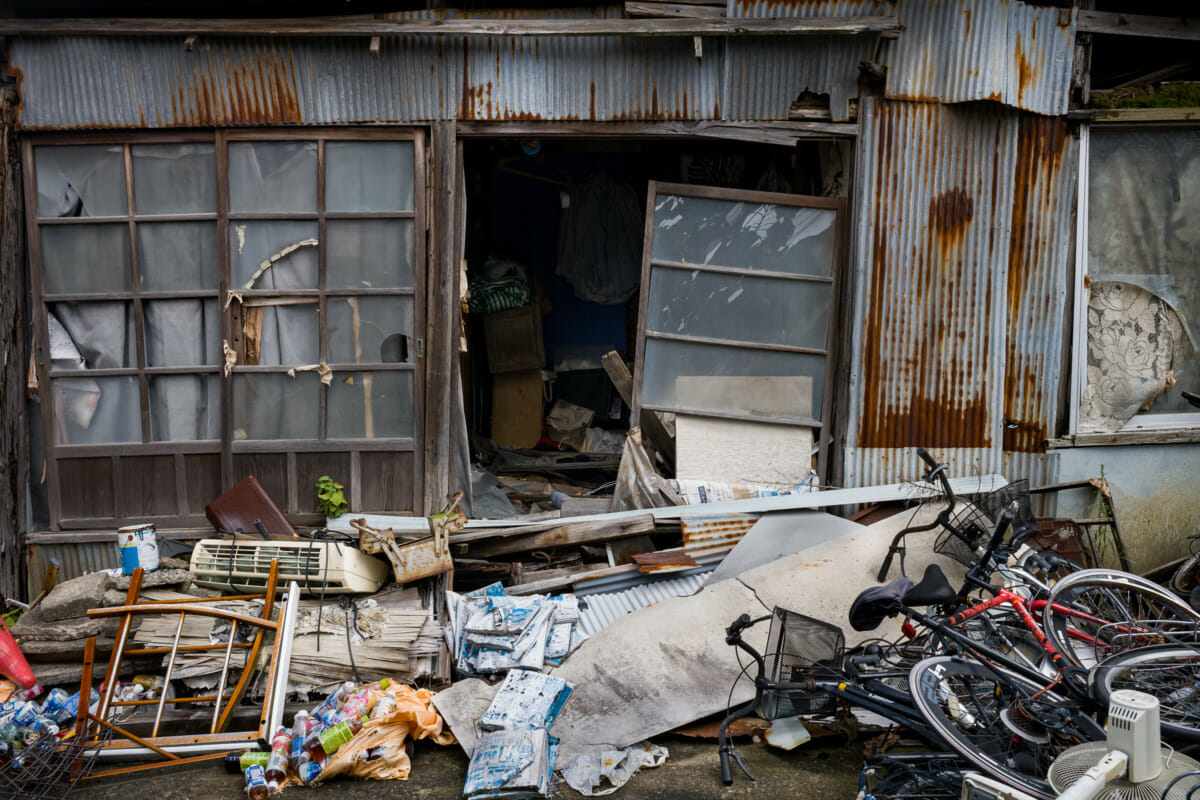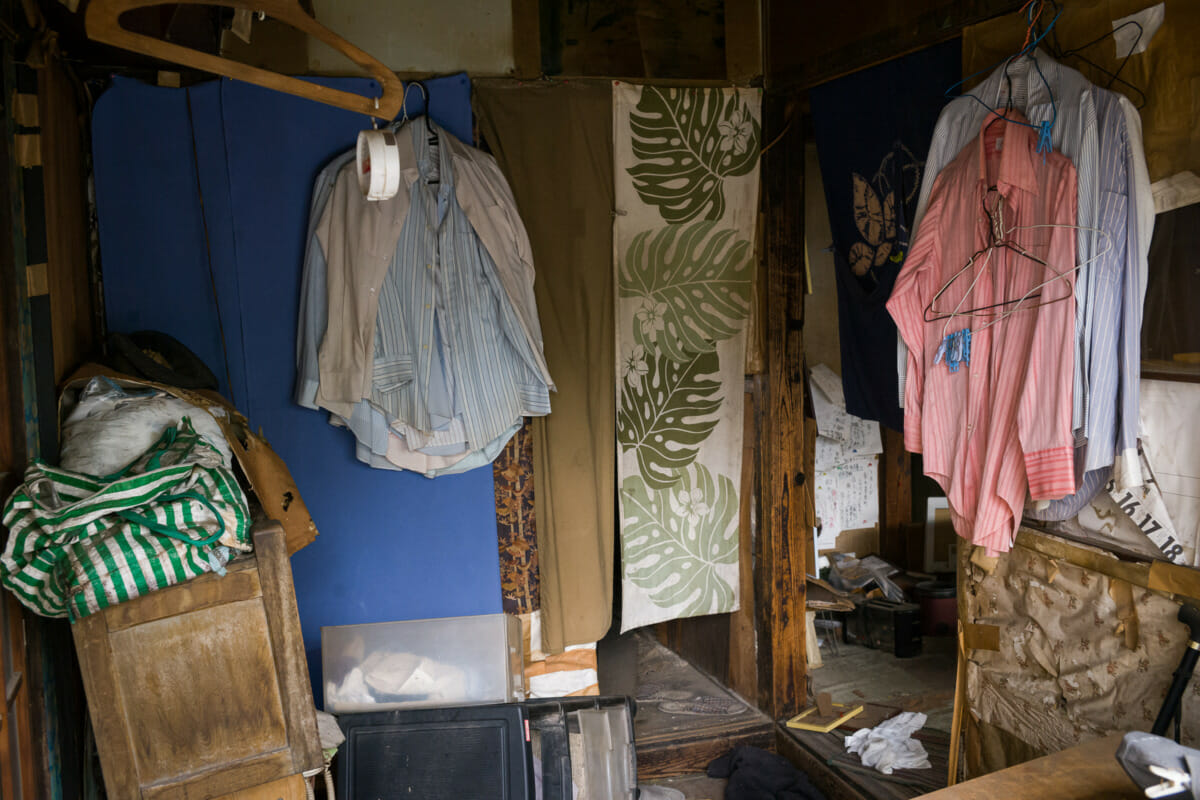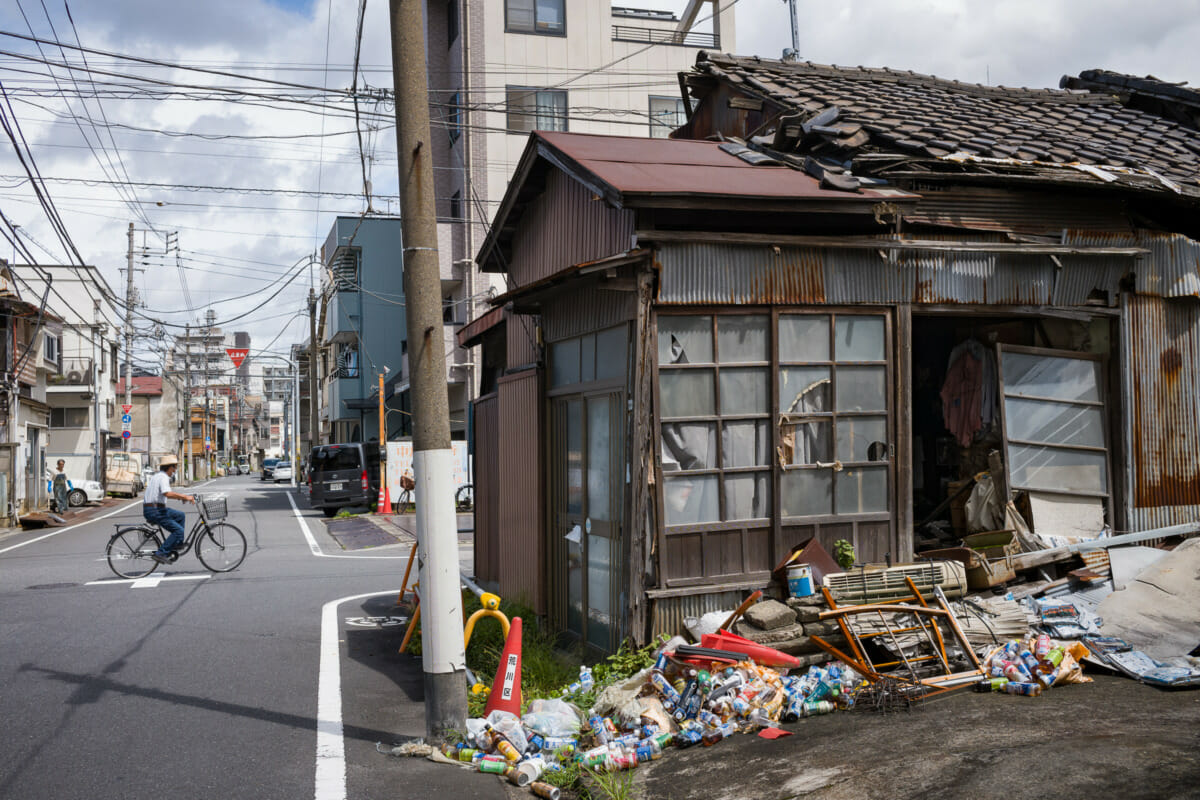Old and incredibly dilapidated shops and homes aren’t that uncommon in Tokyo, but abandoned and slowly collapsing houses on relatively well used thoroughfares most certainly are.
How long it has been there and how long it has been abandoned is anybody’s guess. Similarly, the owner remains a complete mystery aside from the clothes left behind. So with little in the way of information, there’s lots left to the imagination, which in some ways makes it all the more interesting.




Günter says
This is so interesting but I don’t understand why it remains like that.
Lee says
My thought would be ownership squabbles or uncertainties, but that is only a guess. It has been like this for a bit, but also it might not have been abandoned that long ago. It’s genuinely shocking at times to see the houses some people are still living in. Many not at all dissimilar to this. But again, all just possibilities..
ellen says
He sure liked stripes! 😉
Lee says
Yes, good call. That’s one definite!
YTSL says
The pics of this house got me thinking of the one in Hirokazu Kore-eda’s “The Shoplifters”. I can imagine lots of people who watched the film thinking there are no such run-down residences in Japan… but, as many of your photos show, they would be so wrong!
Lee says
Ah yes, hadn’t thought about. Definite similarities. And yeah, couldn’t agree more. Amazing really how many old and rundown places there still are in Tokyo.
Dale says
Very nice series of pictures. In Roppongi, there is a similar house that is as bad looking, and has been that way for at least 5 years, since I just checked Google street view, and it is still there. What is interesting about the Roppongi shack is that it is literally three doors down from a Michelin star restaurant that my wife and I go to.
Lee says
Thank you. That place in Roppongi is unbelievable, isn’t? Not so much its condition, which these photos show isn’t so unusual, but like you said, its location. That land must be worth an absolute fortune to say the least. And yet the old, falling down building is still there…
cdilla says
A series of photographs like this grab my attention first for the infinite detail of decay and abandonment, but then draws me in to imagine what it might have been like to live there towards the end. The solitude of decrepitude giving the occupant ample time to reflect on their life. I’d like to think the guy is comfortable somewhere now with a clean set of stripy shirts and a few new friends with which to spend his time.
Lee says
That’s what ultimately fascinates me the most about these places. Yes they look incredible, and many of them have a charm/beauty all their own, but ultimately it’s the stories they tell. Or at least the stories they hint at. I do hope you are right. Certainly possible. In fact there are so many possibilities.
Once an Expat says
have wondered what happens to the contents of abandoned whatever when such are torn down. Landfill fodder?
Lee says
From what I’ve seen, yes. Demolition crews turn up with a big truck and the whole house is pretty much broken down and driven away.
As an interesting aside, it’s now common to see foreign demolition workers. In fact the whole crew is often non-Japanese. A sign of things to come presumably.
Richard says
Amazing that things have not been stolen!
Lee says
To be honest I don’t think there’d be much worth stealing. Plus it would require stepping across all that rubbish and putting your full weight down on the floor. Definitely not something I was prepared to do — especially not in shorts…
Alex says
These are really interesting photos. Thank you for posting (and taking) them. I love Tokyo and on the few visits I have had there, my happiest memories are just walking the streets taking in the scenes.
I had read in a book on Tokyo architecture (by Ulf Meyer, DOM Publishers) that one of the problems faced with any new construction in Tokyo is that the property is worth 10 times the value of anything that is built on it and so nothing is guaranteed to last for a long period of time (excepting such as the Imperial Palace, shrines, temples, and parks I suppose).
There are also restrictions on aggregating properties into larger parcels for construction so that new, taller buildings have to go higher on smaller parcels, particularly outside the busy downtown core (or cores in Tokyo’s case). I suspect that the ownership of this property is in dispute and so it still stands, as you have clearly shown, providing a fascinating glimpse into the past and leaving everyone guessing as to its fate.
I note also that there is a collection of stuff outside the house (bottle, machines, bicycles). I can only guess that the former owner was collecting all of it or perhaps others in the area started to use this as drop off point for these things. Your pictures tell an interesting story and they raise a lot of questions – well done!
cdilla says
Thanks for the book reference Alex. The info and reviews I could find on it led to a purchase. Looks like my copy will arrive tomorow. And I suspect the Hong Kong one will follow. Love it when something new arrives from an unexpected direction.
Lee says
@Alex Thanks a lot, and you are very welcome. Glad you enjoyed them.
Yes, that ties up with everyone I have heard and read. Plus valuable or not, so many homes simply aren’t built to last. In fact even the shrines and temples are rebuilt. The major ones included.
To be honest, I think the vast majority of the things outside have been left by other people. A chance to get rid of things easily. Happens quite a lot. With costs involved when dumpling stuff, some people take any chance they can get to get rid of rubbish.
@cdilla Excellent. And couldn’t agree more. Lovely when such things happen.
Alex says
@Lee – that makes perfect sense. Thanks.
Alex says
You are most welcome. I hope you enjoy it. I used it as a walking guide the last time I was in Tokyo. You probably already found this out but the book includes QR codes. You can scan the code on your phone and get a google map display of where the building is. That was really helpful for navigation.